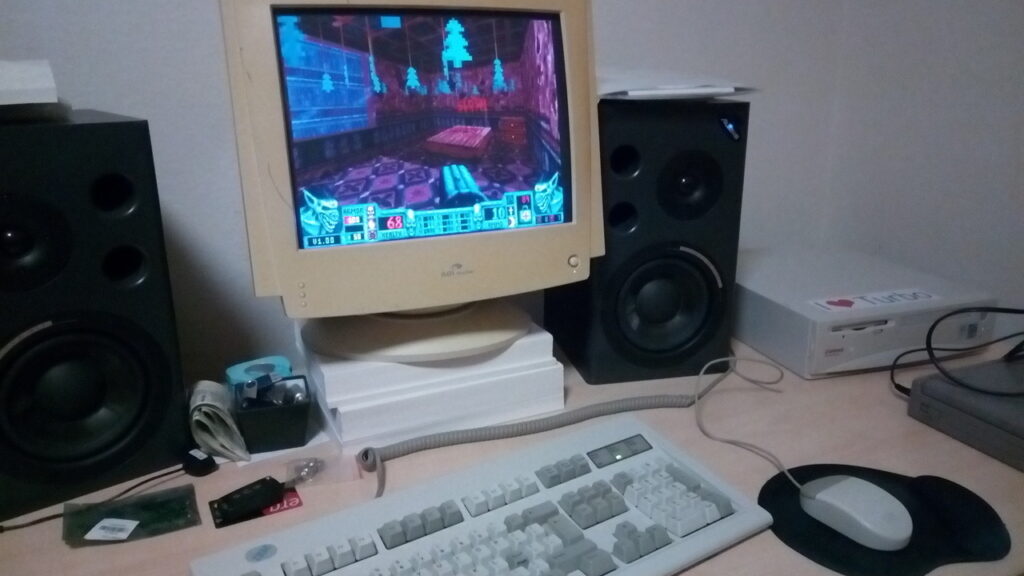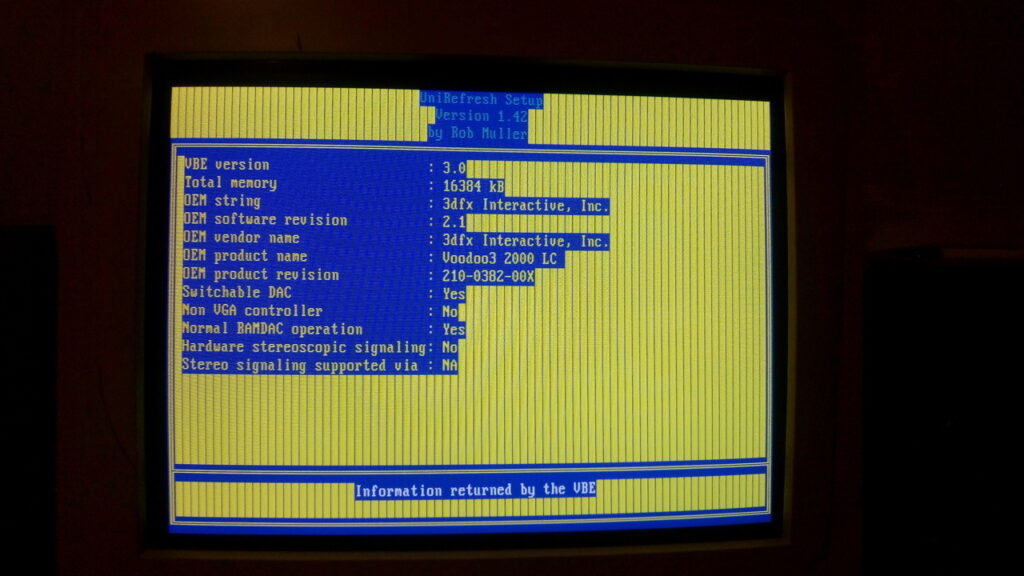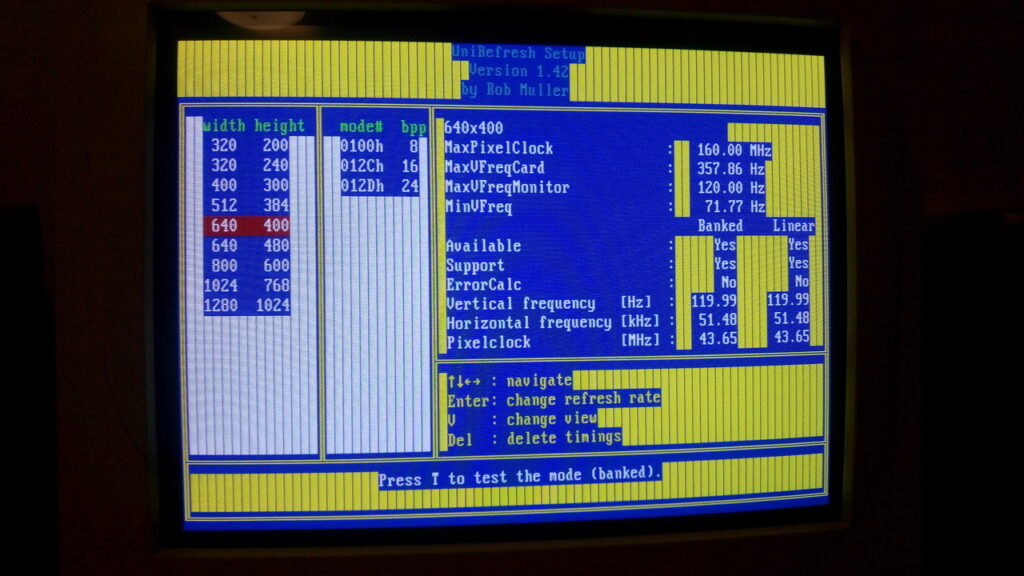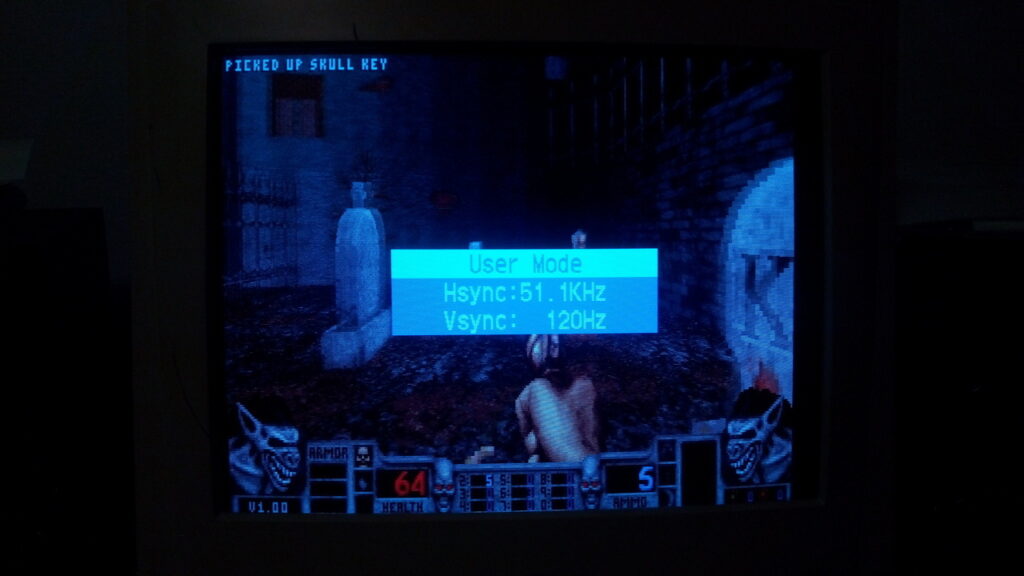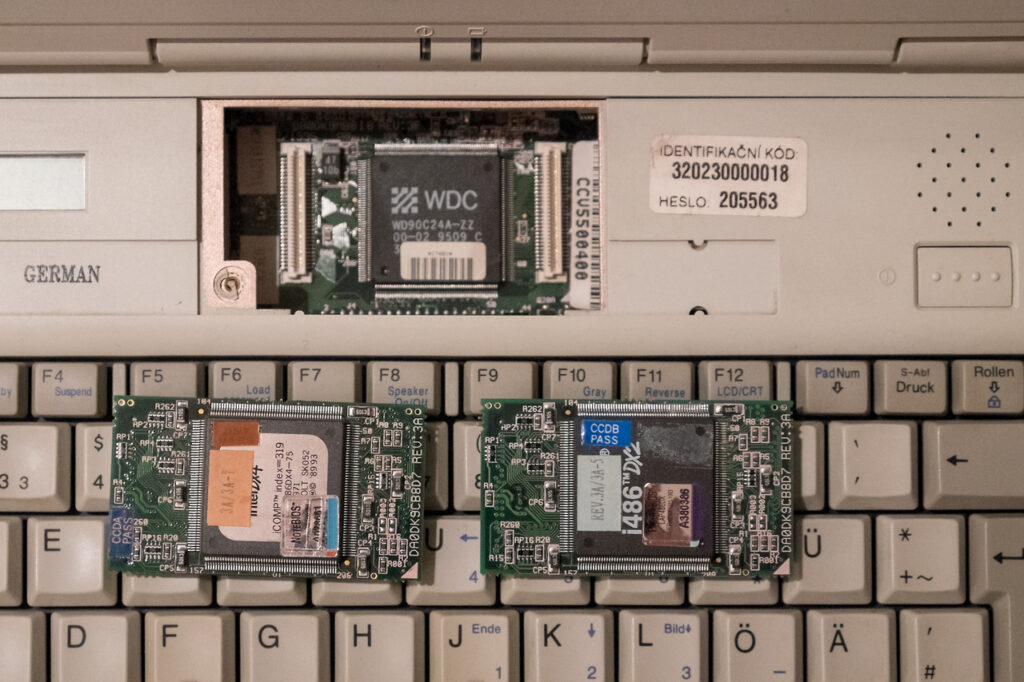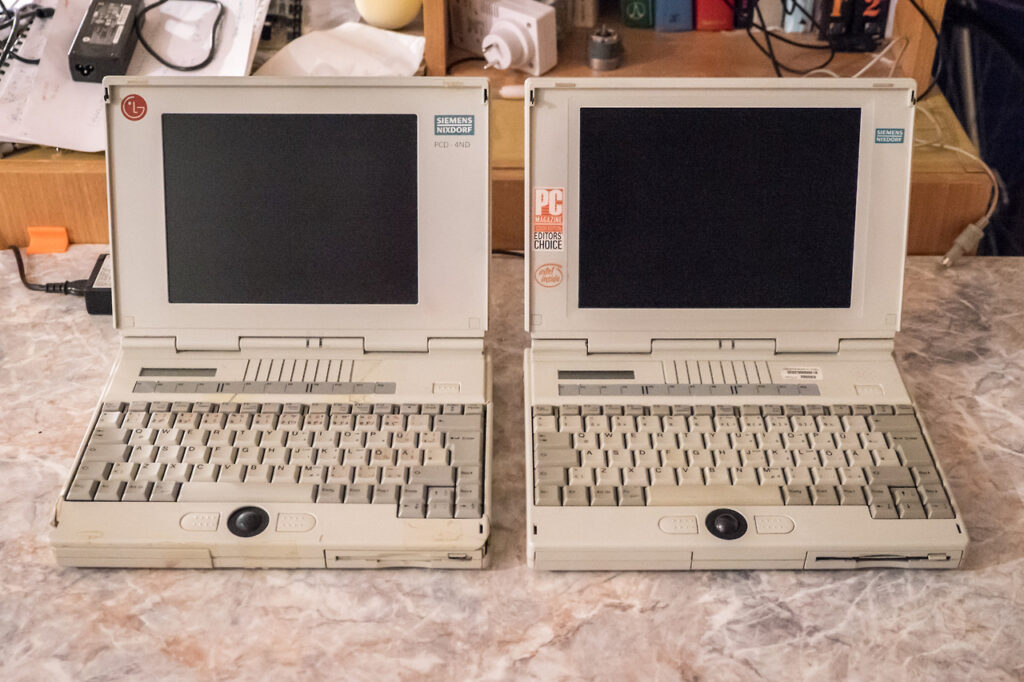Higher Refresh Rate in DOS Games
I decided to stay in my parent’s house for a weekend and although almost all my computer equipment is somewhere else for a long time, under a thick layer of dust I’ve found my old Compaq DeskPro SFF box and a 17-inch CRT that my father bought new in 1998. Surprisingly, the system still works and its hard drive is loaded with many DOS and early 3D-accelerated games… Great time to play all episodes of Blood (a game based on the Duke Nukem 3D engine).
I like playing old games on CRTs but I hate low refresh rates used in DOS games (60-70Hz). If you have as sensitive eyes as I have, there is a solution called UniRefresh. It can modify default refresh rates for each supported resolution and it works well with most games that use VESA. That allowed me to play the game in 640×400@120Hz. Yay!
UniRefresh needs a graphics card supporting VBE 3.0 (VESA BIOS Extensions). Use the latest DOS version of SciTech Display Doctor to emulate VBE 3.0 support on older cards.
